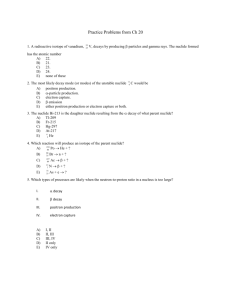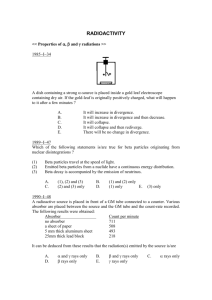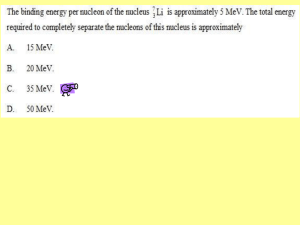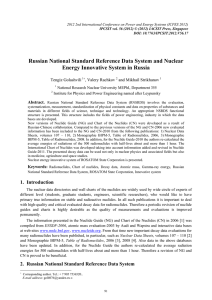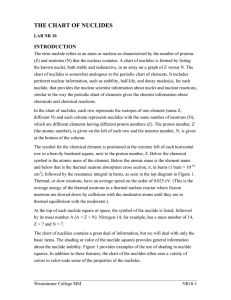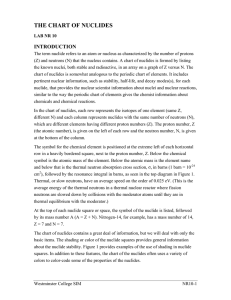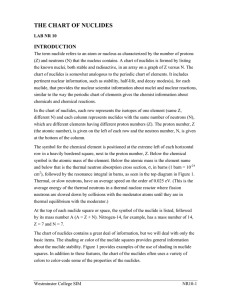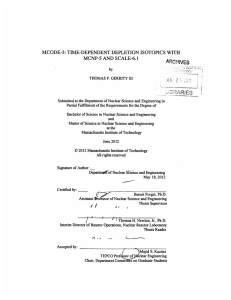Chemistry I-H
advertisement
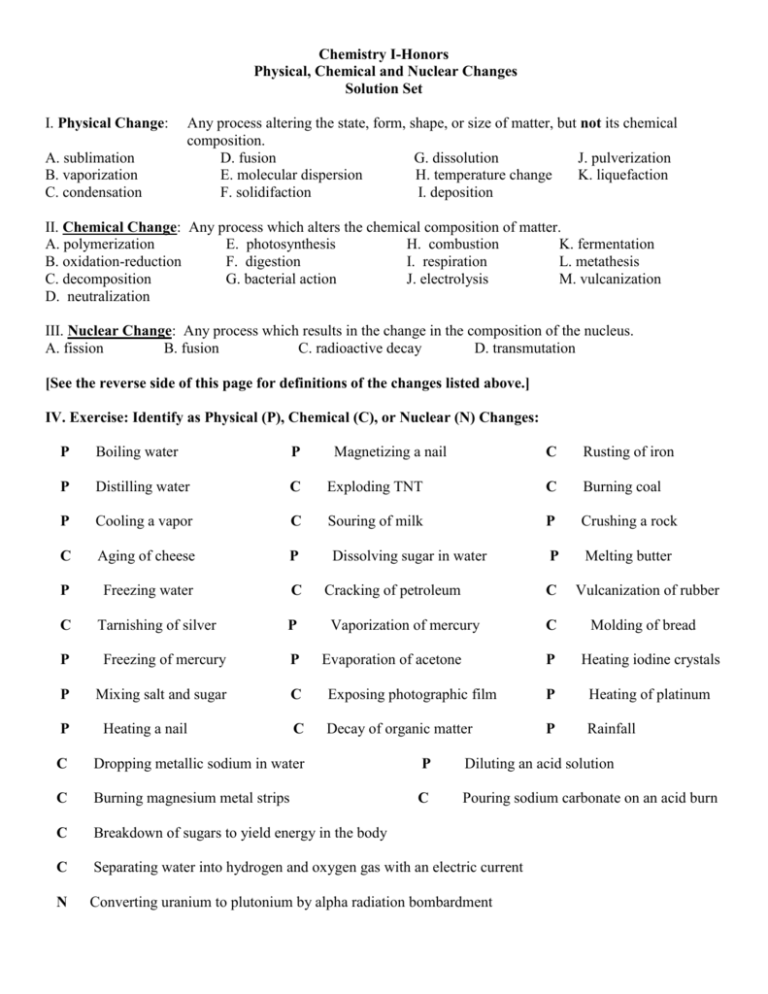
Chemistry I-Honors Physical, Chemical and Nuclear Changes Solution Set I. Physical Change: A. sublimation B. vaporization C. condensation Any process altering the state, form, shape, or size of matter, but not its chemical composition. D. fusion G. dissolution J. pulverization E. molecular dispersion H. temperature change K. liquefaction F. solidifaction I. deposition II. Chemical Change: Any process which alters the chemical composition of matter. A. polymerization E. photosynthesis H. combustion K. fermentation B. oxidation-reduction F. digestion I. respiration L. metathesis C. decomposition G. bacterial action J. electrolysis M. vulcanization D. neutralization III. Nuclear Change: Any process which results in the change in the composition of the nucleus. A. fission B. fusion C. radioactive decay D. transmutation [See the reverse side of this page for definitions of the changes listed above.] IV. Exercise: Identify as Physical (P), Chemical (C), or Nuclear (N) Changes: P Boiling water P P Distilling water C P Cooling a vapor C C Aging of cheese P P Freezing water C C Tarnishing of silver P P Freezing of mercury P P Mixing salt and sugar C C P Heating a nail Magnetizing a nail C Rusting of iron Exploding TNT C Burning coal Souring of milk P Crushing a rock P Melting butter Dissolving sugar in water Cracking of petroleum Vaporization of mercury Evaporation of acetone C Vulcanization of rubber C Molding of bread P Heating iodine crystals Exposing photographic film P Heating of platinum Decay of organic matter P Rainfall C Dropping metallic sodium in water P Diluting an acid solution C Burning magnesium metal strips C Pouring sodium carbonate on an acid burn C Breakdown of sugars to yield energy in the body C Separating water into hydrogen and oxygen gas with an electric current N Converting uranium to plutonium by alpha radiation bombardment Definitions of Physical, Chemical, & Nuclear Changes I. Physical Changes: A. sublimation - conversion of a solid directly into the gaseous state (no liquid formed) B. vaporization - conversion of a liquid into the gaseous state C. condensation - conversion of a gas into the liquid state D. fusion - combination of two solids; soldering metal would be an example. E. molecular dispersion - diffusion of gaseous particles; spreading particles from an area of high concentration to one of low concentration F. solidification - conversion of a liquid into the solid state G. dissolution - dissolving; dispersion of a solute through a solvent to form a solution H. temperature change - transfer of heat; kinetic energy change I. deposition - opposite of sublimation; conversion of a gas directly into the solid state J. pulverization - reducing solid size; grinding K. liquefaction - melting; conversion of a solid to the liquid state II. Chemical Changes: A. polymerization - formation of a polymer (chain) from monomers or dimers B. oxidation reduction (redox reaction) - transfer of electrons from one substance to another - oxidation - loss of electrons; - reduction - gain of electrons C. decomposition - chemical breakdown of a more complex substance into simpler forms D. neutralization - special type of metathesis or double replacement reaction in which an acid and a base are combined to form water, as a well as a salt by-product E. photosynthesis - synthesis reaction in which carbon dioxide and water, using radiant energy, form simple sugars, like glucose. Oxygen gas is released as a by-product. F. digestion - breakdown of food substances into simpler form by chemical & mechanical means. G. bacterial action - usually anaerobic - breakdown of organic matter H. combustion - reaction of a substance with oxygen; highly exothermic in nature I. respiration - appears to be the opposite process of photosynthesis in terms of the overal equation form - aerobic breakdown of simple sugars, yielding CO2 and H2O J. electrolysis - decomposition of compounds using direct current (D.C. - not A.C.) K. fermentation - anaerobic decomposition of carbohydrates L. metathesis - also known as double replacement or double displacement - exchange of cations and anions when two compounds are mixed M. vulcanization - addition of sulfur to natural rubber - strengthens the rubber & adds resilience III. Nuclear Changes: A. fission - splitting of a target nuclide using a bombarding particle; usually produces two or more nearlyequal smaller nuclides as well as some radioactive subatomic particles (radiation). B. fusion - joining of two lighter nuclides to form a larger, heavier nuclide. - common example: reactions of the stars, producing light and heat. C. radioactive decay - spontaneous breakdown of an unstable nuclide; usually produces a nuclide of slightly smaller atomic number (Z number). Radioactive particles are also emitted. D. transmutation - artificially creating new nuclides by bombarding one nuclide with another nuclide (usually a small nuclide with a very small Z#).
